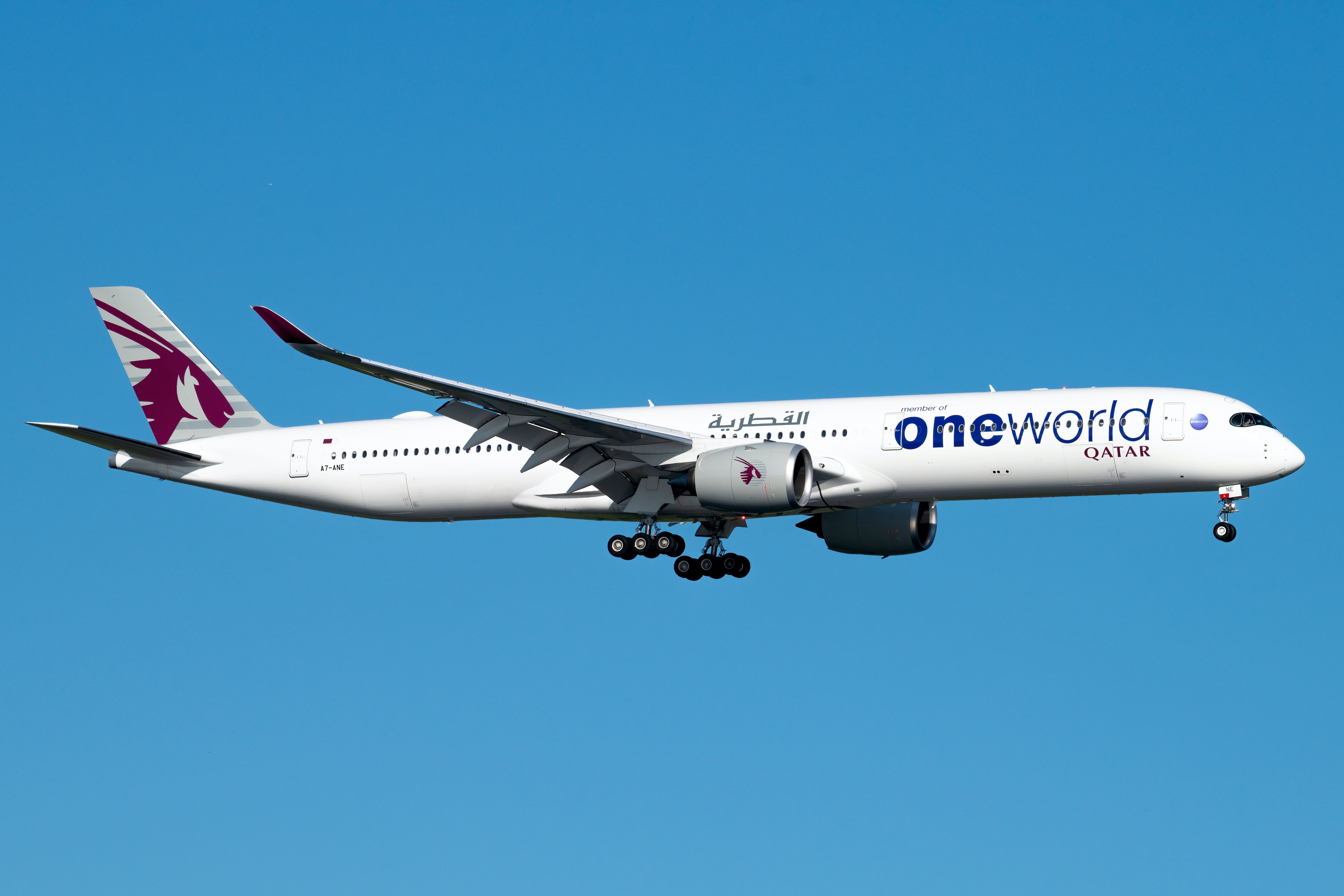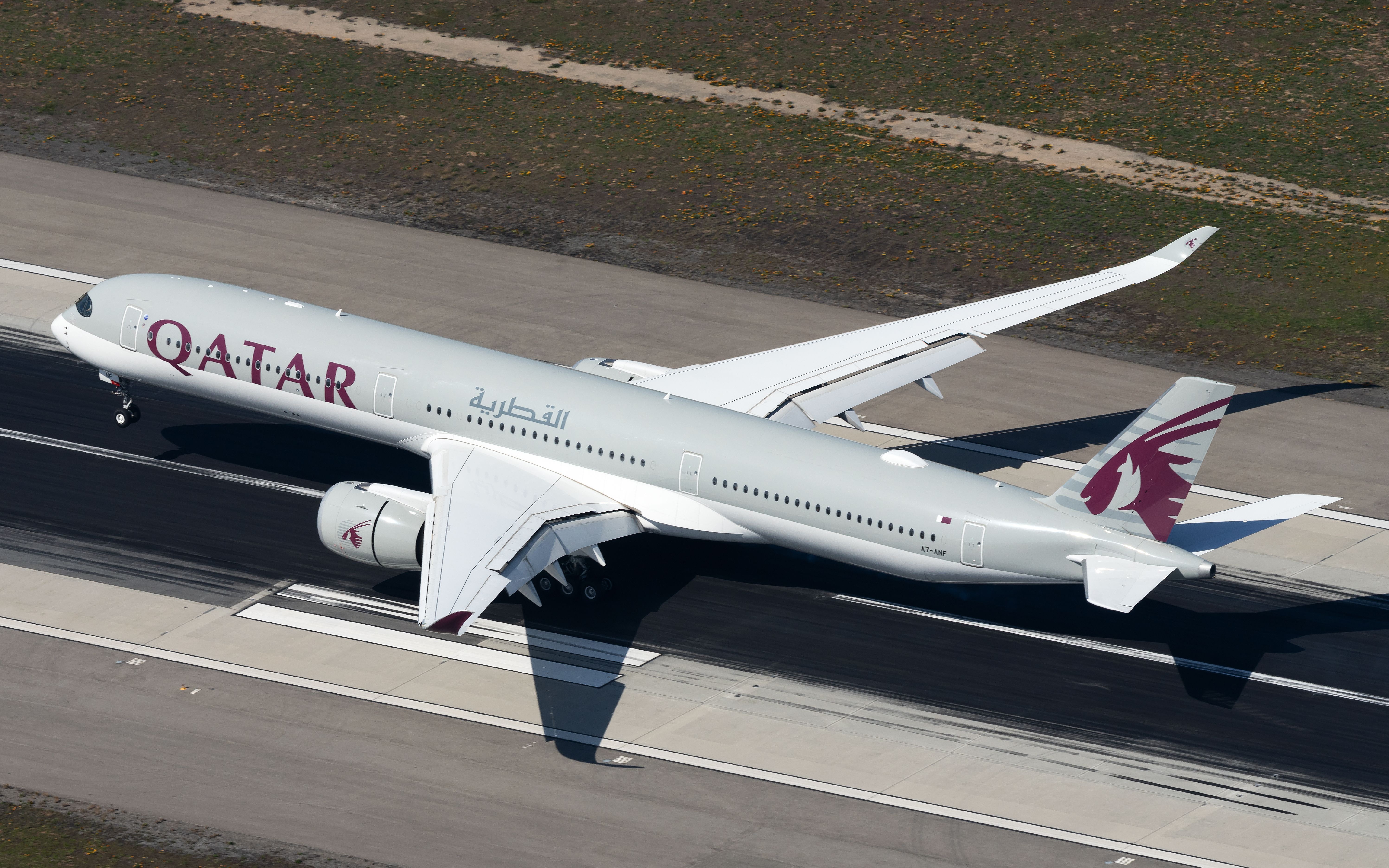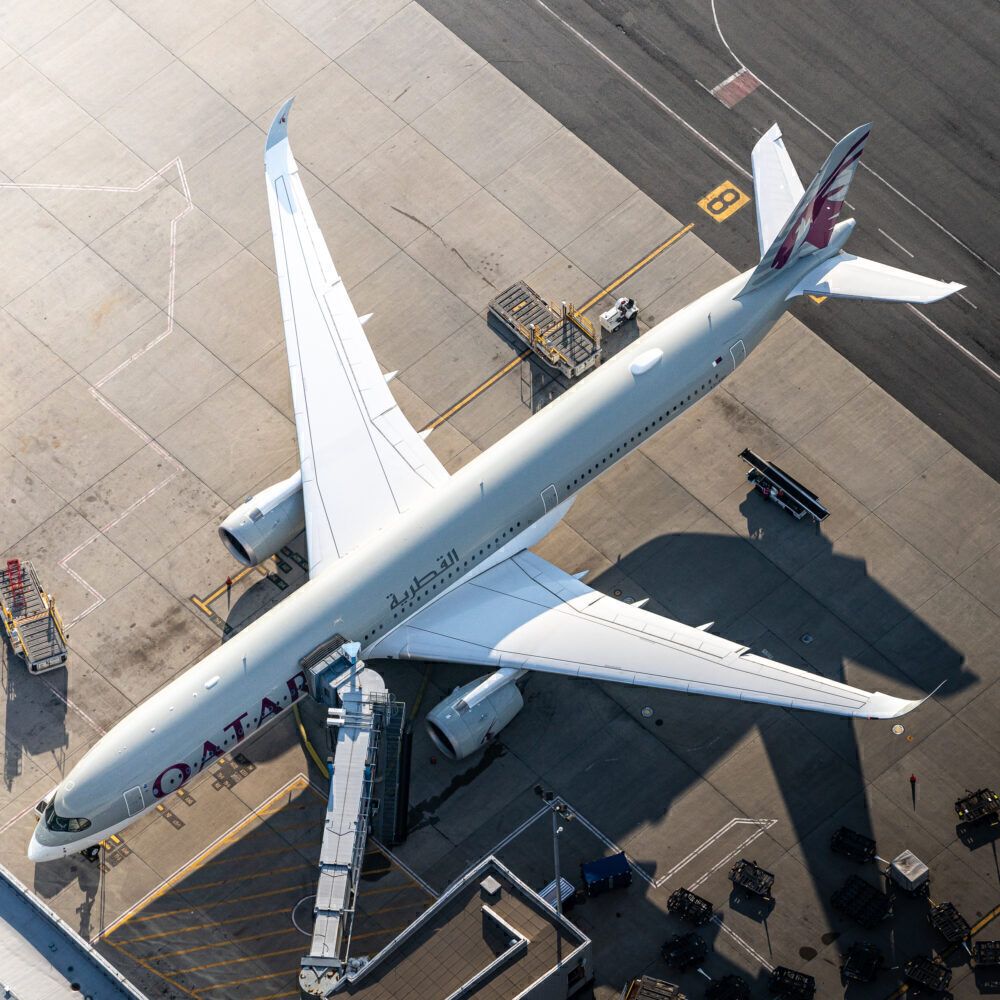Read update
- Qatar Airways updated Simple Flying with a statement regarding the flight.
On July 12th, a Qatar Airways A350-1000 en route from Doha to Tokyo Narita diverted to Seoul because of a problem with one of the engines. The pilots landed the aircraft safely at Seoul Incheon Airport (ICN).
What happened to Qatar Airways flight 806
A diverted flight is never good news. Besides being a cause of stress for passengers and crew, a diversion leads to a cascade of operational disruptions.
On July 12th, this fate was met by a Qatar Airways A350-1000 en route from Doha Hamad International (DOH) and Tokyo Narita (NRT). QR806 left Doha at 02:45 local time (23:45 UTC) for its approximately ten-and-a-half-hour flight to Japan's metropole. At 07:48 UTC, while flying 60 nautical miles (122 km) east of Seoul, the A350 left its cruising altitude of 33,000 ft (10,058 m) and started its descent towards Incheon International Airport (ICN), where it landed at 08:24 UTC on runway 34L.
Following the safe landing, passengers were transferred to another aircraft that flew them to their final destination of Tokyo.
The reason behind the diversion
The Qatar Airways flight crew diverted to Seoul's Incheon International. But what was the cause behind this decision?
The move followed two fault indications - an engine chip and an engine oil leak. The former is linked to the Magnetic Chip Detectors (MCDs). These are used to detect metal chips, rubbles, or particles that end up in aircraft's engine lubrication systems, hydraulic systems, and gearboxes.
The MCDs work in that they contain magnets integrated into an electronic circuit. The magnets attract metal pieces and particles until the circuit is closed, resulting in the pilots receiving a warning message. Notifying the presence of metal particles in these systems is paramount, as they could be a sign of wear.
The consequences of oil leaking in an aircraft's engine can be dramatic. Besides the risk of making the engine inoperational, oil could leak onto hot parts of the plane's engine and air conditioning pressurization systems, causing smoke to spread in the passengers' cabin.
What do we know about the aircraft involved?
The aircraft involved in the diversion is one of Qatar Airways' 22 Airbus A350-1000s.
A7-ANE, powered by two Rolls-Royce Trent XWB-97, is almost five years old and is not difficult to spot, as it features the oneworld alliance livery. It completed its first flight on October 1st, 2018, and entered service with Qatar Airways on November 16th of the same year.
The aircraft has a maximum capacity of 327 passengers in two cabins. The economy class seats 281 customers in a 3-3-3 configuration, while 46 premium seats are to be found in business class in a four abreast. As of March 31st, 2023, A7-ANE completed 16,973 flying hours, with an average stage length of 8 hours and 17 minutes and an average daily utilization of ten hours and 13 minutes.
UPDATE: 2023/07/17 09:27 UTC BY SUMIT SINGH
Qatar Airways updated Simple Flying with a statement regarding the flight.
A spokesperson for the airline shared the following:
"Qatar Airways flight 806, an Airbus A350-1000 on 11 July diverted to Incheon (ICN), Seoul, South Korea, while en route to Tokyo Narita from Doha,
"The technical matter has been reported incorrectly online and at no time was the engine shut down during flight. The aircraft landed safely at ICN and subsequently repositioned back to Doha. All passengers were assisted with their onwards journeys and the safety and security of our passengers is our top priority.”
Do you think the pilot reacted well to the situation? Let us know by clicking on the comment button below!
Source: The Aviation Herald





